The Best New York Style Pizza Dough and 14 Tips for Success!!
I’ve been making a lot of this NY style pizza dough recipe …. The obsession started a while back, and I’ve finally found a recipe that I love the best! After years of experiments (and I mean years!), I am now using this recipe based on recommendations from the many fine pizza makers at www.pizzamaking.com and the late great Dough Doctor, Tom Lehmann.

Making Pizza Dough at Home
Making NY style pizza dough is definitely somewhat of an art form. There are so many variables that can be changed aside from the ingredients alone. For example, these variables include:
- oven temperature
- temperature of the water used to make the dough
- proofing methods (room temp vs cold rise)
- order of adding the ingredients (yes, this makes a big difference!)
- mixing time
- use of autolyse
- use of poolish (I don’t do this or the one before, although I have in the past)
And then of course, the toppings which can be simple or as complex as you’d like. But don’t worry too much about all of this – my method is easy and straightforward. Plus, you will make better dough than 99% of the pizza chains out there. You will not want take out anymore!
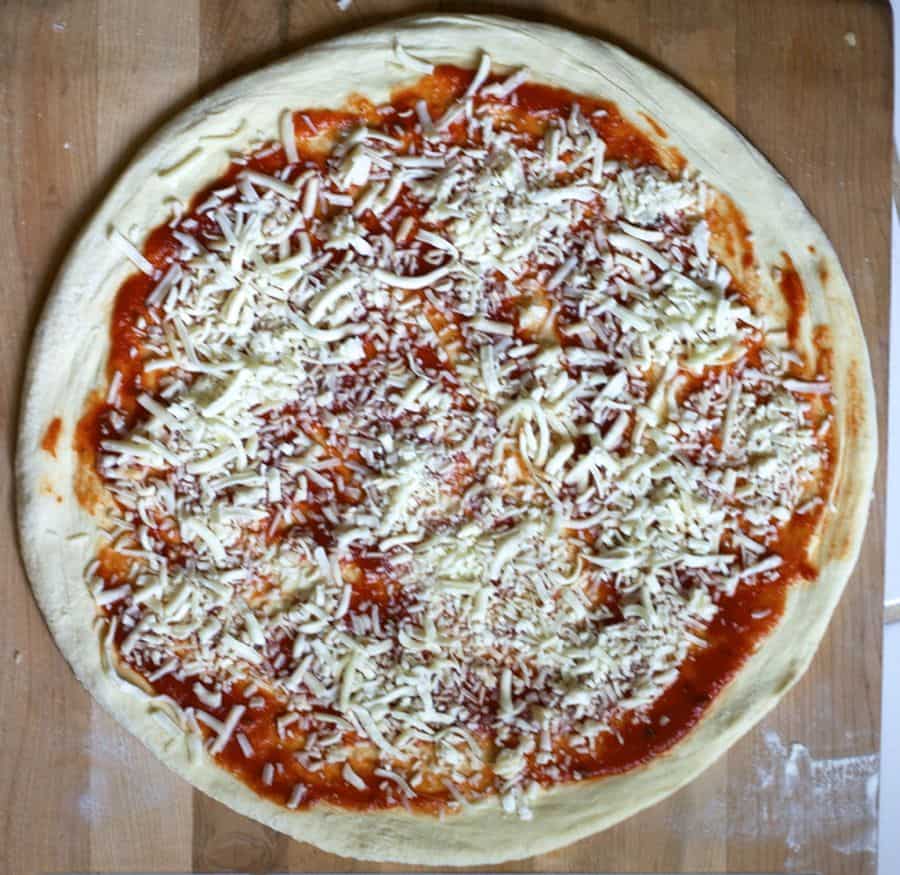
My Favorite Pizza Dough: The Big Secret (How You Proof the Dough)
My all-time favorite dough is NY style dough, which really is classic pizza dough that is stretched out into a thin crust pizza. This type of pizza dough contains water, flour, salt, instant yeast, and olive oil (and sugar especially when baking in a home oven, to help browning).
After it is mixed, it is proofed (left to rise/ferment) in the refrigerator for a minimum of 24 hours and up to 72 hours (it can also be frozen) – this is the big secret. I’ve used the dough up to 5 or 6 days afterwards, so you can essentially prepare dough for the week.
This recipe produces a crisp yet foldable crust that is tender, light, and flavorful and will make enough for four 14-inch pizzas. You can easily double or half the recipe to make 2 or 8 pizzas.

Fourteen Tips for Success
Tip 1: Choosing the flour
Use high-quality flour – I like to use King Arthur’s all purpose or bread flour; higher protein (ie, bread) flours work best. However, I prefer all-purpose flour because I like a lighter, airy crust.
Tip 2: Adding the yeast
Do not add instant dry yeast (IDY) directly to cold or cool water – you may shock the yeast (add the IDY to your flour instead) (please note that IDY differs from active dry yeast, which must be activated by adding it to water).
Tip 3: How much yeast?
Use only enough yeast to “get the job done” – yeast eats the sugar in your flour to produce its leavening effects – I find that if you use too much, your dough will be tasteless (this is just my opinion); however, it is a fact, that too much yeast can make your dough taste bad. Most recipes out there, some of them in well known, published books contain too much yeast!
Tip 4: Cold ferment that pizza dough!
Always use your refrigerator. The best NY style doughs “ferment” or “cure” in the refrigerator for at least 24 hours and up to 48 72 hours. This is called a “cold rise” (vs warm rise on your kitchen counter).
The refrigerator is used to retard (or slow) the dough’s fermentation, allowing that distinctive flavor to come through (ever wonder why some pizza crust tastes different than others, despite the fact that they are both made from just about the same exact ingredients? – this is a big reason why!)
When your dough rises too quickly, the flavor will not develop optimally. Slow rise = MUCH better flavor.
Tip 5: Weigh those ingredients!
Use a scale to weigh the flour instead of using a measuring cup – it is much more accurate and will yield superior results. I’ll admit, I resisted doing this for a loooong time. Just do it. You’ll be glad you did and your dough will be more consistent and much improved.
Tip 6: Add oil last
Mix the oil in as the last step, after the flour has all been incorporated. This is important to allow the flour to hydrate properly.
Tip 7: Flour your dough balls
Before tossing or opening your dough balls, flour them *very* well on each side (if you are a beginner) to ensure they do not stick to your counter or pizza peel. I sometimes use a bit more flour after I begin spreading them.
Tip 8: Keeping those rims a bit puffy
Take care not to “degas” the rim of your pizza as you are spreading your dough! Do NOT ever use a rolling pin! There are many different methods to spread/open your dough ball. I hope to add a few pictures someday of this process.
Tip 9: Baking pizza in a home oven
Ensure that your oven is preheated for a sufficient amount of time (about 1 hour) and bake the pizza within 6 to 8 inches of the top of your oven (ie, your broiler) so that the tops browns sufficiently in conjunction with the bottom of the pizza.
Do not place the stone near the bottom of your oven. I made this mistake for too many years.
After your stone has been preheated sufficiently, the heat from the stone will cook the pizza from the bottom and you can switch the broiler on if you find you need more browning on the top (I now use the broiler to bake my pizzas…more on this sometime in the future).
If you find that your cheese is browning well before your rim attains sufficient color, use partially frozen cheese (ie, place shredded cheese in the freezer while the oven is heating up) and cold sauce or you can drizzle just a bit of olive oil on top of cheese.
Tip 10: Use a pizza stone or steel
Use a pizza stone if you have one. The stone with draw moisture out of the dough and produce a beautifully crisp crust. I use a pizza steel because my stones kept breaking.
Tip 11: Use just the right amount of sauce
Do not use too much pizza sauce – it will make your pizza soggy
Tip 12: Find the right kind of cheese
Do not use low fat cheese to top your pizza or pre-shredded cheese (the former will not melt sufficiently and the latter contains additives that prevent the cheese from sticking together and therefore does not melt very well). The best is low-moisture, whole milk mozzarella.
If you must use pre-shredded cheese, I’ve found that adding the sauce on top of the cheese helps with the melting. Also, do not use too much cheese; apply it sparingly so that you can achieve that mottled NY pizza appearance.
Tip 13: Flour your pizza peel
Use semolina or flour on the bottom of your pizza peel to prevent the pizza dough from sticking but be careful not to overdo it because it will burn.
Tip 14: Learn to launch that pizza
Give the pizza peel a few very small quick jerks to make sure the pizza will easily slide off your pizza peel before attempting to transfer pizza to the oven, and more importantly, rub flour into the peel before placing the dough on top.
Essential Equipment
Please note that as an Amazon affiliate, we earn a small commission if you purchase a product at no additional cost to you.
I adore my baking steel; it’s transformed my home pizzas into restaurant-quality and better. You will love this! A kitchen scale streamlines measurement with remarkable accuracy, while a pizza peel is essential for smoothly sliding pizzas into the oven. And proofing boxes provide an optimal storage for pizza dough fermentation, enhancing flavor, texture, and elasticity.
Please visit our SHOP page for more recommended tools and equipment to make restaurant-style NY-style pizza at home!
How to Stretch the Pizza Dough
A nice video (from The GoodFellas Pizza School of NY), showing how to stretch the dough:

How to Freeze Homemade Pizza Dough
- After mixing dough and dividing into balls, place dough in refrigerator for at least 24 hours.
- Place dough balls on baking sheet lined with plastic wrap or parchment paper, cover loosely with plastic wrap and freeze until firm (~ 2 to 3 hours or up to overnight).
- Wrap frozen dough balls individually in plastic and store in zipper-lock bags for up to 4 weeks.
- When ready to bake, transfer unwrapped dough into the refrigerator for 12 to 24 hours before making pizza.
- Bring dough to room temperature for 20 to 60 minutes before baking (less time for hot kitchen/summer and more time for cool kitchen)
Pizza Dough Calculator
Need more dough? Less dough? Try out our new Pizza Dough Calculator to calculate the weights to get it just right!
Have More Questions?
Please See My NY Pizza FAQ
If you tried this recipe, please leave a 🌟 star rating and let me know how it went in the 📝 comments below! SUBSCRIBE for more recipes.
📖 Recipe

The Best New York Style Pizza Dough
Equipment
- pizza stone or pizza steel for baking
- Standing mixer optional or hand knead
- kitchen scale highly recommended instead of volume measures
Ingredients
Original Recipe for Four 14-Inch Pizzas; want to make more or less? Use the pizza dough calculator
- 6.5 cups (796 g) all purpose flour or bread flour (weighing is most accurate!)
- 2 1/4 cups (493 g) water barely cold water (17.4 oz per 2 1/4 cups)
- 1 teaspoon (3.5 g) instant dry yeast
- 2.5 teaspoons (15.6 g) salt
- 2 teaspoons (7.8 g) sugar
- 1 tablespoon (11.8 g) olive oil
1 Pound of Dough (~454 grams) (use the pizza dough calculator to make more or less dough)
- 2 1/4 cups (274.5 g) all purpose flour or bread flour
- 3/4 cup (170.2 g) water
- 1/2 teaspoon instant dry yeast
- 1 teaspoon salt
- 3/4 teaspoon sugar
- 1 teaspoon olive oil
Instructions
Mixing the Dough
- Place water in mixing bowl.
- In a separate bowl, mix salt and yeast (and sugar if using) into flour
- Combine flour/salt/yeast mixture into water and mix until all the flour has been incorporated.
- After flour has been totally incorporated, add oil and knead for about 4 to 5 minutes (see note)
- Test final dough temperature, which should ideally be between high 70s to low 80s (optional)
Dividing and Rising
- Divide dough into 4 equal pieces (using a digital scale if possible; each ball should weigh 11.5 oz [~326 grams]), shape into a ball, and place in greased, sealed quart-sized container or oiled/greased freezer bag and refrigerate overnight or up to 72 hours (After much experimenting, I have concluded that I like 3 days best but day 2 is good too).
Assembly and Baking
- The following day, remove your dough balls within 1 hour or less of baking and allow the dough to come to room temperature. (the dough will tend to blister more if the dough has not been allowed to come to room temperature however, I often bake coldish dough without problems, just some bubbling)
- In the meantime, place your pizza stone in oven and preheat at 550 degrees (depending on thickness of your stone and your oven’s power) for at least 1 hour
- Open each dough ball using care not to degas, transfer to a pre-floured pizza peel (or on parchment paper), and top with your favorite sauce, cheese, or other toppings.
- Transfer pizza from peel to oven or slide parchment paper onto preheated pizza pan/stone and bake for 4 to 6 minutes each until browned on top and cheese has melted but not burned.
- Enjoy!
Notes
- Use of weight based measurements is highly recommended instead of US Customary. You will need a kitchen scale.
- METRIC amounts DO NOT correspond exactly to the US Customary amounts because, for example, 796 grams equals 6.4 cups (and most can’t measure 0.4 cups or 0.22 cups). Recipe was based on grams.
- Use the Pizza Dough Calculator
- If you want to use the dough the next day, knead a little more (slow speed for about 8 to 10 minutes)
- If you have time to let the dough rest for 3 days, knead for 4 to 5 minutes, low speed or hand knead.
- After mixing dough and dividing into balls, place dough in refrigerator for at least 24 hours.
- Then, place on baking sheet lined with plastic wrap or parchment paper, cover loosely with plastic wrap and freeze until firm (~ 2 to 3 hours or up to overnight).
- Wrap frozen dough balls individually in plastic and store in zipper-lock bags to store for up to 4 weeks (longer may work, but results might vary).
- Before using, transfer unwrapped dough into the refrigerator for 12 to 24 hours before making pizza.
- Bring dough to room temperature for 20 to 60 minutes before baking (less time for hot kitchen/summer and more time for cool kitchen).
- calculate your own using baker’s percentages: 62% hydration, 0.4% yeast, 2% salt, 1.5% oil, and 1% sugar or use my new pizza dough calculator.
Nutrition
Try these other pizzas and this NY pizza sauce:
Buffalo style (one of my absolute favorites)
White with prosciutto
White with spinach and feta
Pizza sauce

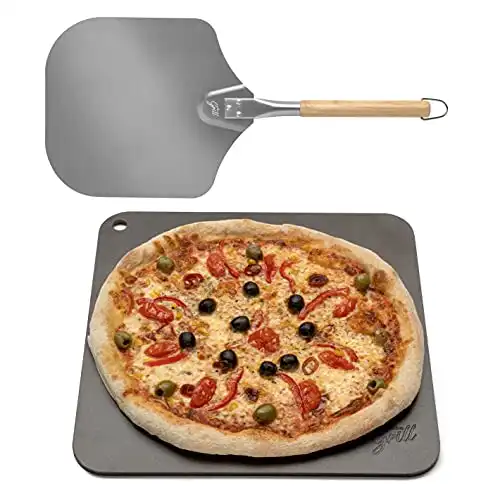
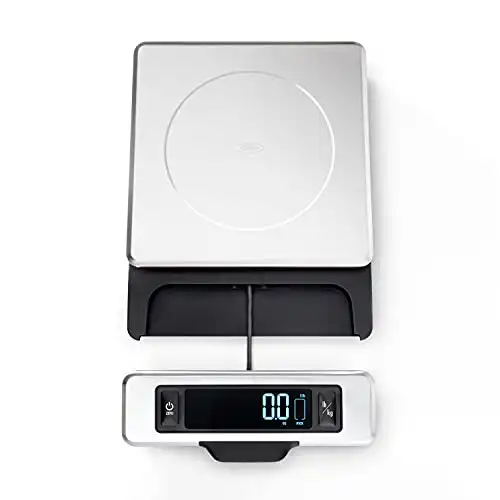
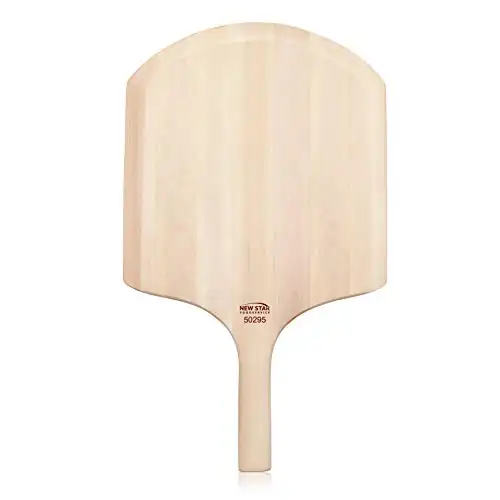
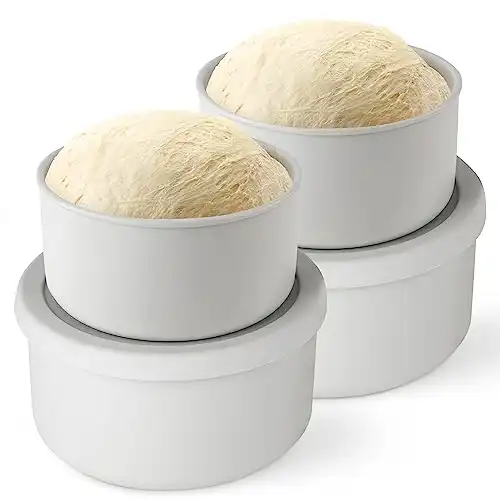
My dough came out very sticky and it’s been in the fridge since last night and does not really look much different?
It’s hard to say without seeing it, but I’d say to leave it out for a few hours if you want to use it today. Otherwise, leave it for another day or two. you should definitely see some growth/expansion in the dough. We all have different refrigerator temperatures and also are using different flours, different yeast, etc so there will be some variability. And I would flour the top and bottom of the dough as you place it on the counter but don’t mix it into the dough.
Thank you I plan on leaving it in the fridge until tomorrow and I’ll keep it out for a couple hours before I start, I can’t wait to try this and have been looking for a great pizza dough recipe hopefully I can get it perfected!!
Any chance you could send a video of exactly what you do while your making this?
I wish I had one, so sorry…I have been meaning to make one for so long – tell me what kind of video I should make? Are you confused about what the dough should look like, or how to mix it?
If you leave it in the fridge for 2 nights, I would only leave it out for an hour or so.
Ok I’ll do that, I would just like to see exactly how you mix it, what it looks like before it goes in the fridge then what it looks like after it’s been in the fridge
It’s now 5 years since I first used this recipe. Thank you very much. I use this as my base recipe. I’ve done many different alterations, modifications, experiments, etc. I always tell people to visit this recipe if you want to start making pizza as a beginner.
Glad to hear it! My goal has definitely been to help folks make pizza dough at home because it’s pretty easy to do and good 🙂
I am obsessed with making and perfecting homemade pizzas and when I came across this recipe, it was immediately a keeper! Soooo good!! Thanks for the recipe
Thanks! I know the feeling – me too!
Had to re-read the step about stretching the dough… I first read it as don’t Degas the dough. Kinda like don’t Bogart that joint. LOL The I realized you meant not to de-gas the dough. Or maybe Edgar’s dough should be left alone. ?
AHHHH, glad I read this….I looked up degas and all that came up was about and artist….. will not de-gas the dough now…..
it looks so good dose it tast like restortie quallidy
Yes! Better than most restaurants!
What should you set you oven at of you don’t have a pizza stone and are using a pizza pan? And for how long? Thank you.
I would use the same settings but use a cookie sheet (if rimmed, turned upside down) and then slide the pizza onto the sheet after the oven and the sheet have been warmed up. Maybe use parchment paper on the bottom of the formed pizza and slide it into the oven using a pizza pan or other large flat pan/tray
Hello, I kept one doubt, in step 2, you say to mix salt and yeast (and sugar if using) to flour. But salt does not “kill’ yeast? Would not be better to mix first yeast and sugar to water to “wake up” the yeast, and then put this mixture into flour and just after join the salt?
Hi! Yes, the salt does kill the yeast if it comes in direct contact but I do not find it’s a problem when they are mixed together within the flour. You can place the salt on the right side of the bowl and the yeast on the left side if you would like to separate them. I believe it’s only a big problem in they are both mixed together in the water. And, I think you should refer to the package instructions on your yeast as far as activating. Mine does not require activation as I use instant dry yeast by RedStar and SAF. Hope this helps!
I just made this dough. I followed the directions to a Tee. Just wondering if this dough is supposed to be super thick and tough? My commercial kitchenaid can barely turn the dough hook.
Hi Louis – No, it is not normally super thick and tough – what kind of flour did you use and did you weigh the ingredients or use a volume/cup measures?
Nice
How long in advance of baking can the pizzas be formed? I’d like to do that before my guests arrive.
Oh no Kathy – I’m sorry I missed this. I know someone who does it a few hours in advance and just stacks the formed dough between parchment paper or even tin foil – hope you made out ok.
I did, and the pizza was pretty good. Unfortunately the second took a lot longer than the first one. I still think it’s the best pizza I’ve ever made. I’ll just need to keep working on it until I learn the correct cook times. Thank you for your response, and also for a recipe that will help me, eventually, make professional looking and tasting pizza!
A few days ago, I made your New York style pizza, and I really liked it. I was making another batch today for a birthday party on Saturday. I realized that the last time I halved the recipe but I only made one pizza. That one pizza was 14 inches. I need to make two pizzas for Saturday, and I again halved the recipe, but now I’m afraid that I won’t be able to stretch the dough into 14 inches since that’s all I got out of the last one. Does this make sense? How can I be sure that the dough will stretch to 14 inches without having holes in it? I really want this to be good since it is for a party Also, can I use a pizza pan on top of the pizza stone and still get good results? I haven’t mastered the technique of launching the pizza to the stone. When I have tried, the pizza has always stuck to the stone. I really need your help before Saturday. Thank you in advance.
Hi Kathy! So it sounds like you made your pizza on the thicker side. You can stretch the dough balls into 12-inch rounds instead of the 14 inch if you like your pizza a tiny bit thicker than the super thin NY style (actually this would be the thickness that most non-NYers are used to eating). The dough should not tear provided it is not old dough and that it has developed enough in the fridge and you used good quality highish protein flour. To transfer the dough you can place the stretched dough on top of some parchment and then place that on the pizza pan. When the stone is good and hot, slide the pizza with parchment onto your stone and you’ll be good to go. I hope the way that I explained that makes sense?
Thank you very much for such a quick response! Evidently I do like my pizza quite a bit thicker than New York style, although I really wouldn’t have considered what I made the other day thick crust. But it definitely wasn’t thin. It was just somewhere in the middle, and I thought it was delicious. And I used half of the full recipe which should’ve made two pizzas and I only made one. But they were so good, I’m tempted not to change anything next time. I live in Oklahoma, so I’m not used in New York pizza anyway. Again, thank you very much, and thank you for the great recipe!
With your help, my family has fallen in love with my NY style pizzas. My wife and son both told me on separate days “this is the best thing you have ever made!!” Thank you so much!
Warm regards,
Joe McKinney
I’m so glad to hear it, thanks!
This recipe is so simple to execute and the results are excellent!! The BEST crust I’ve had in a long time. Thank you for sharing!
Thank you for posting this! It looks awesome, and I’m excited to try it. Just one question… in the tips in the beginning of this post, you talk about where to place your pizza for broiling, then later in the instructions you talk about baking it. Should you bake it, or should you broil it? What temperature? Thanks!
Hi Ellie, I’ve done both, which is probably why it sounds confusing. Every home oven is different and so it’s tough to give universal recommendations. If you are using a baking stone or baking steel, I would start by heating the oven up and placing the stone within 6 to 8 inches of the top and then launching the pizza onto the stove using the bake feature. You can also experiment, using this same set up (stone within 6 to 8 inches of top) using the broil feature but I’d start with bake method first. Look at this post, which I used the broil feature, added the optional sugar, and positioned the pizza within 4 inches of the top! Big difference compared to the original pizza post 🙂 Good luck! You will seldom order pizza out after mastering this pizza.
What should the dough feel like once it’s ready to go in the fridge? Should it be sticky?
Sometimes mine is a bit sticky – that should be okay. it’s usually better after it’s been refrigerated. if you have to, you can use a little bit of flour when handling it